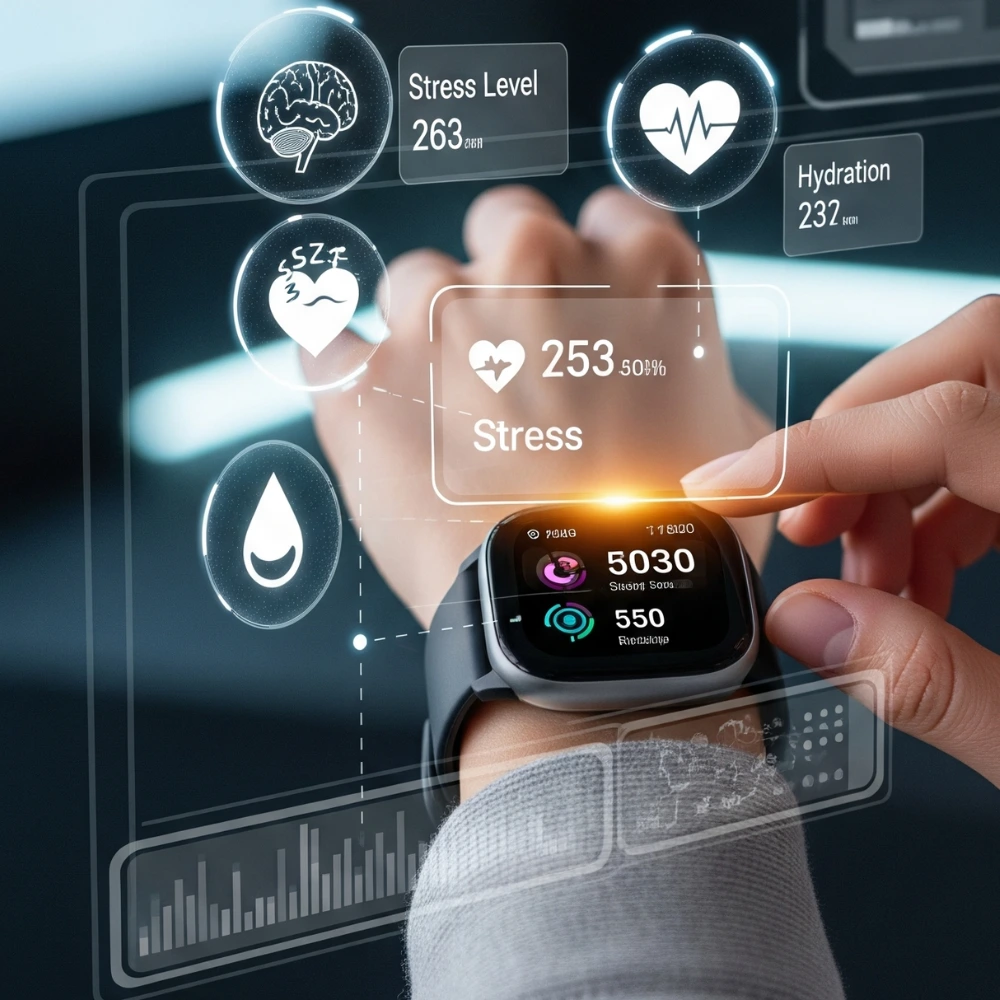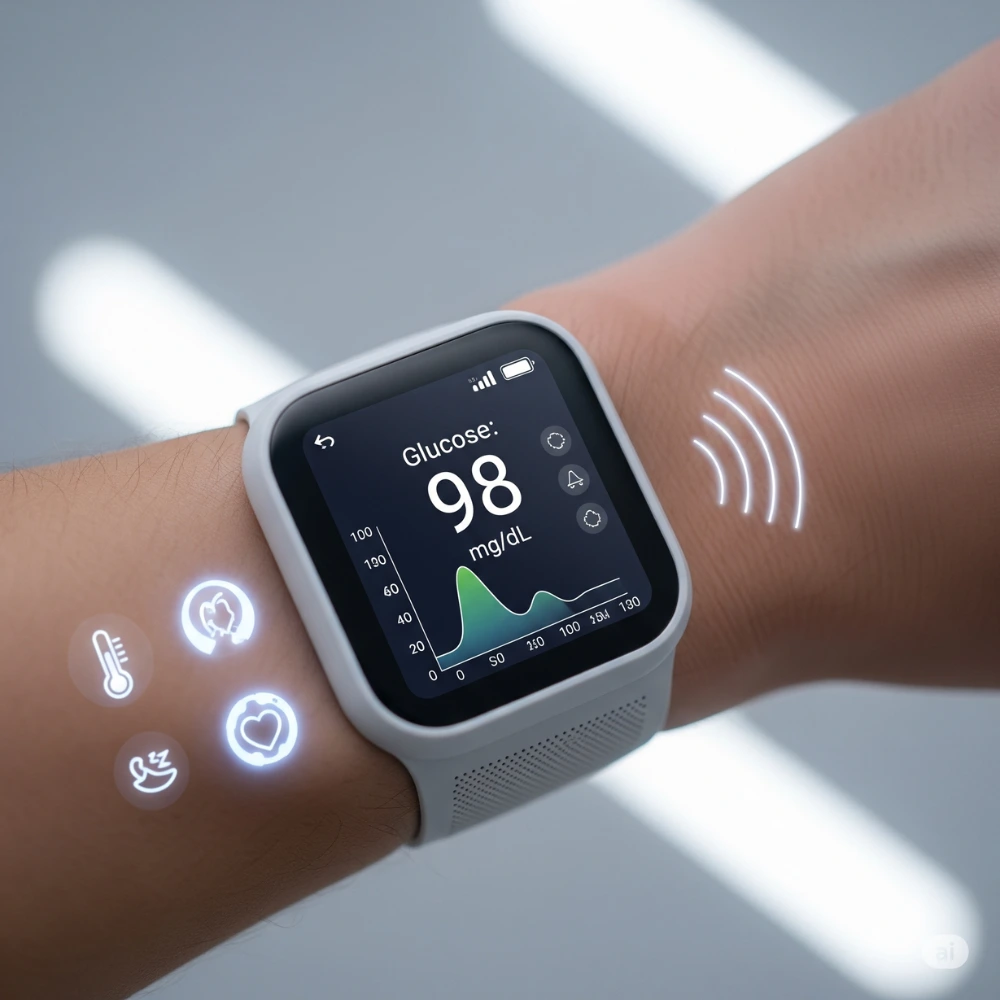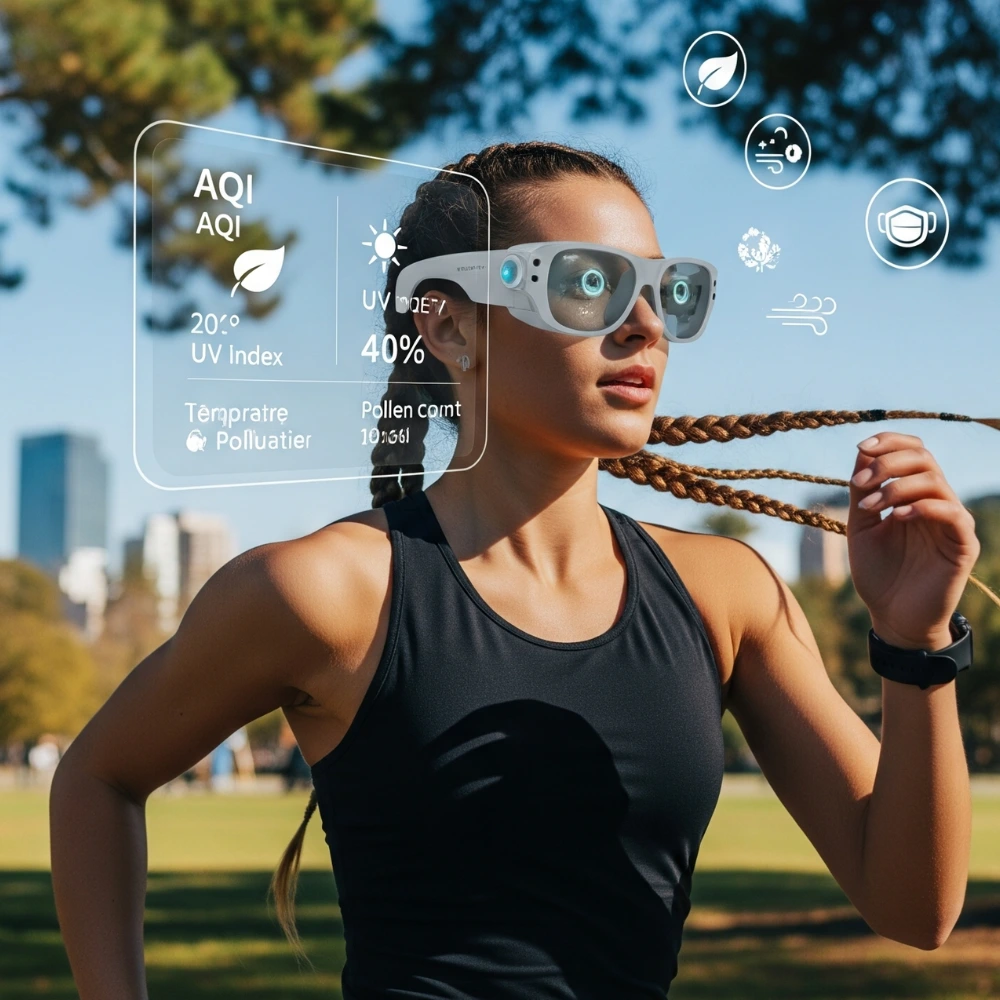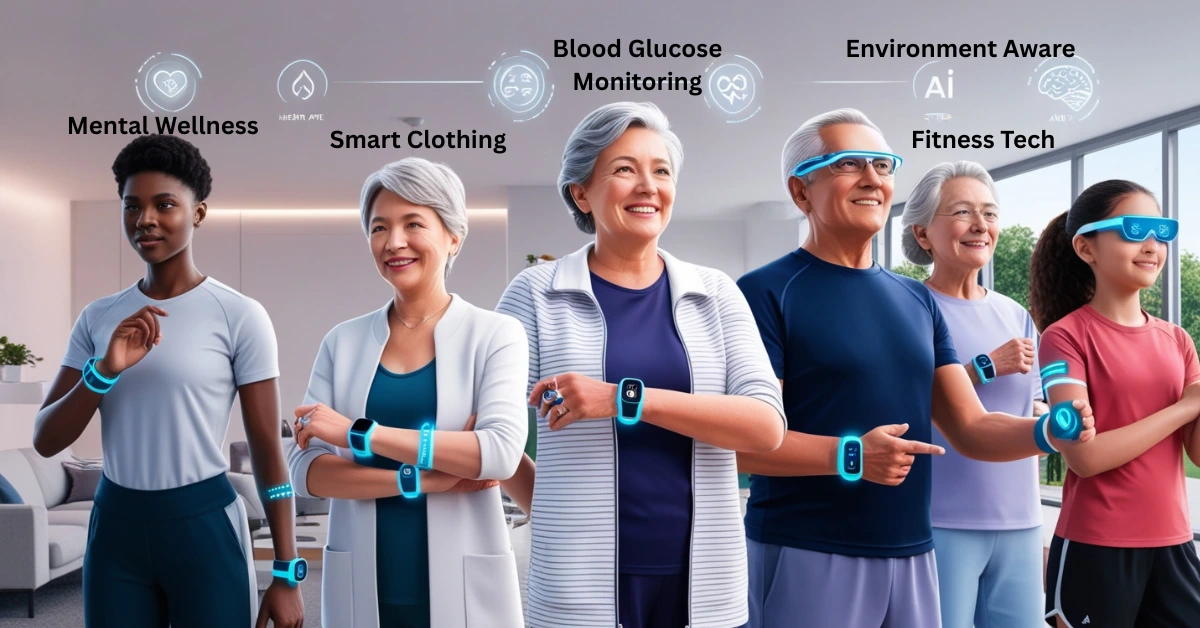Introduction
Wearable technology is driving the fast-paced evolution of the fitness world. From smartwatches to fitness trackers, these high tech gadgets are now a part of many people’s daily routines. Whether you’re tracking your steps, monitoring your sleep, or checking your heart rate during a workout, wearable devices are helping millions take charge of their health. By 2025, this technology will have become more advanced, accurate, and personalized than ever before.
What Is Wearable Fitness Tech?
Wearable fitness tech includes smart devices worn on the body that help track health, physical activity, and overall well being. These gadgets use sensors and artificial intelligence (AI) to collect real time data about your body’s physical activities and biological signals, then translate that data into useful insights.
Wearable fitness tech goes far beyond simple step counters. Today, these devices can track:
- Heart rate and blood pressure
- Sleep quality and stages
- Calories burned and distance covered
- Stress levels and mood changes
- Blood oxygen (SpO₂) and temperature
- Menstrual and fertility cycles
- Workout intensity and recovery
The Growing Need for Wearable Fitness Tech Trends
As our lives become more fast paced and digitally connected, the need for smarter health and fitness solutions is rising. People are no longer relying on occasional doctor visits or guessing their fitness levels. Instead, they want instant, reliable, and personalized insights, and that’s exactly where wearable fitness technology comes in.
Why the Need Is Growing?
With growing health awareness and rapid tech advancements, more people are seeking smart, personalized fitness solutions.
1. Health Awareness Is Increasing
Modern lifestyles reflect a stronger commitment to personal well being. Concerns about obesity, mental health, stress, sleep disorders, and chronic diseases like diabetes are encouraging people to take preventive steps. Wearable devices provide easy-to-understand data that helps users stay informed and in control.
2. Busy Lifestyles Require Smart Solutions
With tight schedules, long work hours, and limited time for exercise, people are looking for efficient ways to stay fit. Wearable tech offers convenience by tracking activities automatically, sending reminders to move, or even suggesting quick workouts that fit into daily routines.
3. The Shift Toward Preventive Healthcare
Instead of waiting for health problems to arise, more people are adopting preventive measures. Wearable tech can track irregularities in heart rate, stress levels, sleep patterns, and even glucose levels, helping individuals catch warning signs before they become serious.
4. Integration with Digital Health Platforms
Many wearables now sync with telehealth apps, electronic health records, and online fitness programs. This integration makes it easier to manage your health holistically, connecting fitness, nutrition, mental wellness, and medical care all in one place.
5. Post Pandemic Focus on Wellness
The COVID-19 pandemic shifted focus toward personal health and well being. People have become more interested in monitoring their oxygen levels, temperature, immunity, and recovery. Wearables that offer these functions have grown in demand.
Fitness for All Ages
Wearable fitness tech is no longer just for athletes or young adults. Kids are wearing activity trackers that promote play and physical activity. The market is expanding to serve every age group.
2025 Wearables: Beyond Step Counting to Full Health Insights
This year’s trends go beyond just counting steps. Today’s wearables prioritize instant health feedback, AI fitness support, recovery monitoring, and emotional wellness. With the latest advances, wearables have become true lifestyle companions.
Smarter Health Metrics with AI Integration
In 2025, one of the key developments is the growth of AI-enabled fitness wearables. These wearables don’t just show raw data like steps or heart rate; they analyze your habits and give personalized recommendations.
Instead of a one size fits all approach, AI studies your sleep, movement, calories, and stress levels to coach you in real time. Imagine your fitness tracker reminding you when you’re dehydrated, suggesting recovery days based on fatigue, or recommending yoga for stress, all based on your patterns.
Popular Features:
- Adaptive workout plans
- Real time stress tracking
- AI sleep coaching
- Predictive health alerts
Advanced Sleep and Recovery Tracking
Sleep is now seen as the foundation of fitness. In 2025, wearable tech will emphasize recovery and sleep optimization more than ever. Devices like Oura Ring Gen 4, Whoop 5.0, and Apple Watch Series X offer deep insights into your REM cycles, respiration rate, HRV (Heart Rate Variability), and even overnight skin temperature.
Recovery scores are calculated each morning, telling you whether your body is ready for intense activity or needs rest. This helps reduce injury, improve performance, and boost mental clarity.
Key Benefits:
- Accurate sleep staging
- Morning readiness scores
- Breathing rate monitoring
- Personalized rest day suggestions
Wearables for Mental Wellness
Fitness isn’t just about muscles and cardio. 2025 wearables now actively help to manage mental health and emotional wellness. Devices include sensors to detect mood shifts, stress spikes, and mindfulness gaps. Some even offer built in guided meditation sessions or gentle vibrations to help users pause and breathe during stressful moments.
Apps like Muse, Fitbit Sense 3, and Google Pixel Watch 2 now track your electrodermal activity (EDA) to understand stress better and suggest exercises to ease anxiety.
Tools You’ll Find:
- Mood journaling via voice input
- Daily mindfulness tracking
- Stress alerts with breathing tips
- Haptic feedback for relaxation
Fashion Forward Wearable Designs
Gone are the days of bulky wristbands. Today’s fitness devices offer a perfect mix of style and performance. Brands now collaborate with fashion designers to make wearables stylish for both the gym and the office.
You’ll see:
- Smart rings (like Ultrahuman Ring AIR)
- Slim fitness bracelets
- Clothing with embedded sensors
- Smart earrings that monitor pulse and activity
These sleek wearables offer deep health insights while looking fashionable. Whether you’re attending a meeting or doing a HIIT workout, your device stays with you in style.
Fitness Wearables for Women’s Health
There’s a major rise in female focused fitness wearables in 2025. Devices now include menstrual cycle tracking, fertility monitoring, pregnancy wellness, and menopause support.
Wearables like Bellabeat Ivy, Garmin Lily 2, and Oura’s Women’s Health Mode are designed with female physiology in mind. They offer insights that help women align workouts and recovery with hormonal changes.
Features Include:
- Ovulation prediction
- Period and symptom logging
- Workout planning around cycle
- Menopause temperature monitoring
Biometric Smart Clothing
2025 sees fitness tracking move beyond the wrist. Smart clothes, like shirts, sports bras, and leggings, now come with woven sensors that can measure heart rate, muscle tension, posture, and body temperature.
These garments are especially popular with athletes and fitness professionals, offering precise measurements in real-time and syncing with mobile apps. Brands like Nadi X, Hexoskin, and Sensoria are leading the way.
Non Invasive Blood Glucose Monitoring
For those managing blood sugar, whether diabetic or just health conscious, 2025 wearables offer needle free glucose monitoring. Companies like Samsung, Apple, and Afon are launching devices that track glucose using infrared sensors or sweat analysis.
This feature allows users to manage their energy levels, diet, and insulin needs more precisely, all without painful finger pricks.
Fitness Tech for Older Adults
Wearable fitness tech is becoming more inclusive in 2025. Wearables like Apple Watch SE, UnaliWear Kanega Watch, and Medical Guardian Smartwatch are built with larger interfaces, emergency calling features, and voice control for ease of use.
Environment Aware Fitness Tech
Environmental sensors are another big 2025 trend. Wearables now help users adapt workouts to weather, pollution levels, UV exposure, and allergen alerts. For example, if air quality is poor, your watch may suggest an indoor workout or a mask.
This ensures users can stay healthy and safe while exercising outdoors.
ZTEC100 Fitness Tracker: Affordable Smart Health Monitoring
The ZTEC100 Fitness Tracker is gaining attention in 2025 as a budget friendly yet feature rich wearable designed for everyday users. It combines essential fitness and health tracking with a lightweight, minimalist design, making it ideal for beginners and casual users.
Greater Integration with Smart Home and Apps
Today’s fitness wearables are deeply connected to other smart devices. In 2025, your watch or ring may sync with:
- Smart scales
- Connected gym equipment
- Smart mirrors
- Health apps like MyFitnessPal or Noom
- Smart water bottles and sleep lights
With cross platform compatibility, you get a seamless wellness experience across devices. Whether it’s tracking hydration, scheduling workouts, or adjusting lighting for better sleep, your wearable becomes the center of a healthy lifestyle ecosystem.
Subscription Based Wellness Ecosystems
Instead of just being a tool, wearables are now entry points into full fitness and wellness ecosystems. Most major brands offer subscription services that include workout libraries, guided meditations, dietary coaching, and one-on-one support.
Examples include:
- Apple Fitness+, Fitbit Premium, WHOOP Pro
- Daily workout routines and progress tracking
- Nutritional planning tools
- Virtual coaching and communities
The Future Demand for Smart Health Wearables
The future of health is preventive, personalized, and tech driven, and wearable fitness technology will be at the heart of this transformation. As global health challenges rise and lifestyles become more sedentary, the need for intelligent, proactive health solutions will only grow stronger.
Remote Health Monitoring Will Be Standard
Telemedicine is here to stay, and wearable tech will act as a bridge between patients and healthcare providers. Smartwatches and rings will continuously send health data to doctors, enabling real time diagnostics and personalized treatment, even from miles away.
Final Thoughts
As this technology continues to evolve, we can expect even more exciting changes that blend health, convenience, and personal insight. Whether you’re new to fitness or a lifelong enthusiast, these wearable trends can help you reach your wellness goals with confidence.



